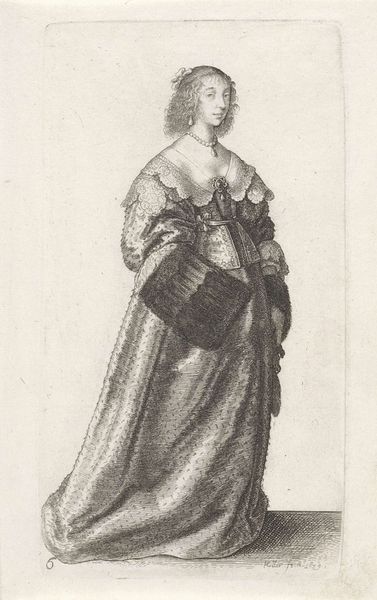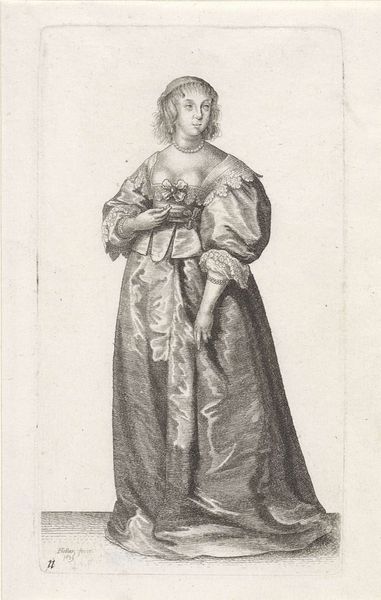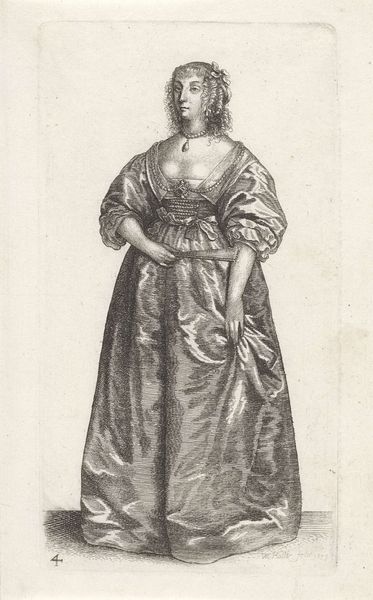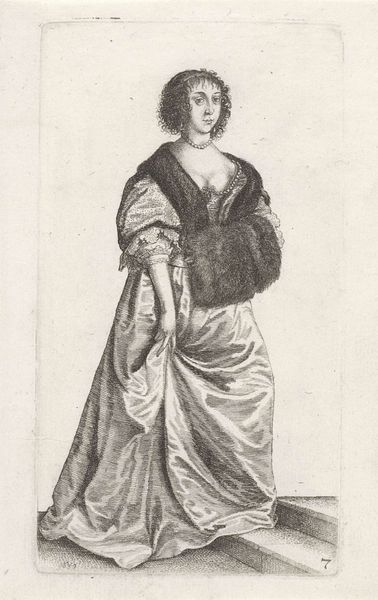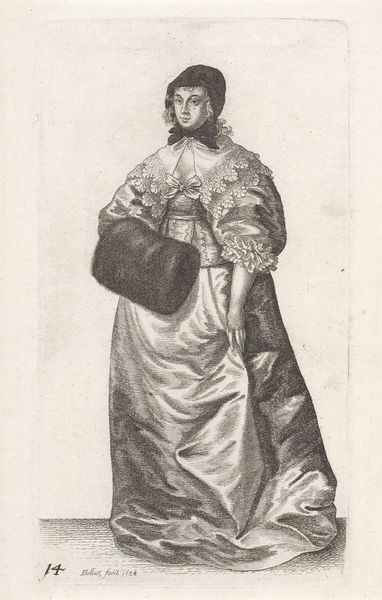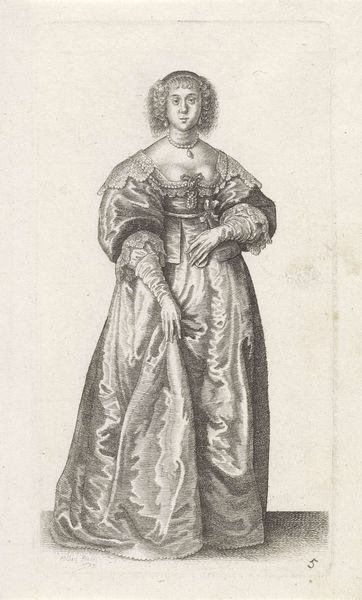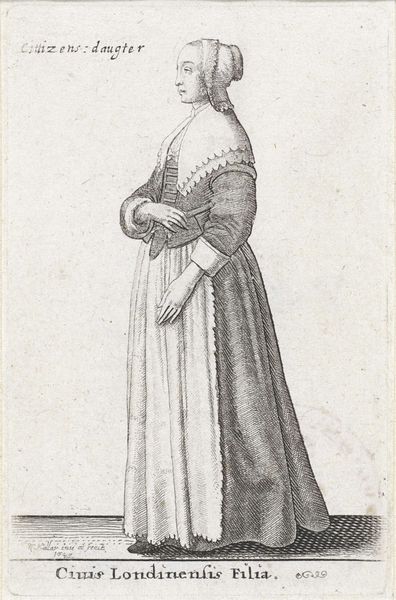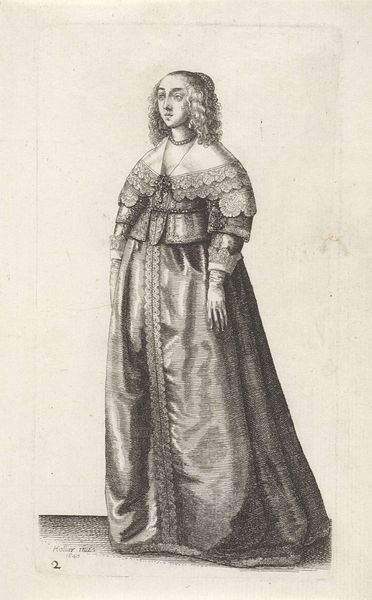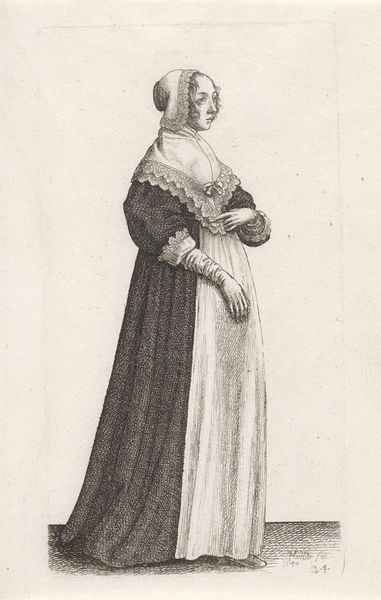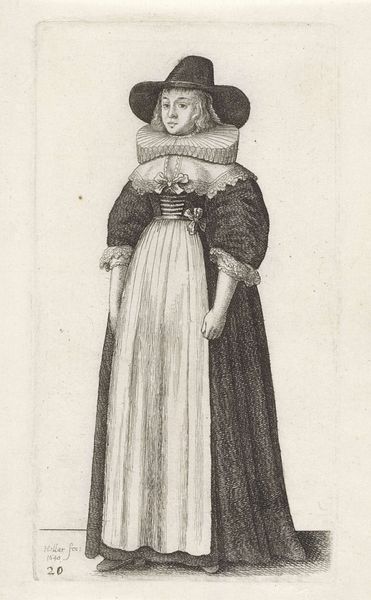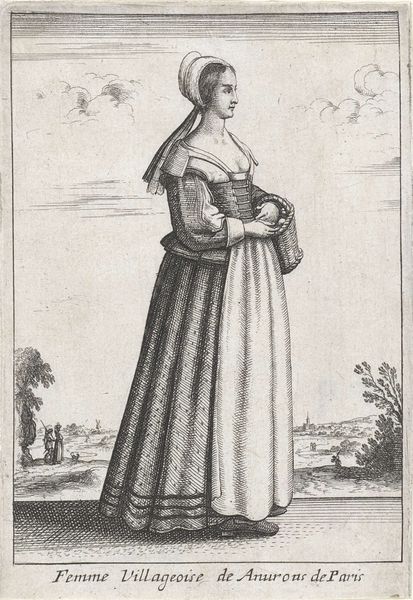
Ornatus Muliebris Anglicanus (The Clothing of English Women) 1638 - 1640
0:00
0:00
wenceslaushollar
Rijksmuseum
print, engraving
#
portrait
#
medieval
#
baroque
# print
#
figuration
#
line
#
portrait drawing
#
genre-painting
#
academic-art
#
dress
#
engraving
Dimensions: height 133 mm, width 74 mm
Copyright: Rijks Museum: Open Domain
Editor: We’re looking at "Ornatus Muliebris Anglicanus (The Clothing of English Women)," an engraving made between 1638 and 1640 by Wenceslaus Hollar. The precision in the lines makes the fabric look so tactile. What catches your eye in terms of form and composition? Curator: Observe the clear linearity, Editor. The beauty of Hollar’s work lies in its structural integrity. Note the contrast between the meticulously rendered lace and the broader, simpler strokes defining the gown. How do you interpret the weighting of the subject? Editor: It feels like all of my attention is pulled to the very middle. I keep returning to her clasped hands. Is that intended? Curator: Precisely. The centralised composition compels the viewer to consider this convergence. Her face sits on the vertical axis while the massing of the dress gives the piece an almost conical shape with the draped skirt dominating the negative space. How does that strike you? Editor: It gives her such a strong presence, the solid cone resting squarely in the centre is really effective. Curator: And, crucially, consider how the fall of light, delicately captured by Hollar, emphasises certain folds and textures over others, creating a rhythm and a visual hierarchy within the frame. Do you think it flatters her form? Editor: Now that you point that out I can see it has a strong enhancing purpose, the artist guides my gaze through tone alone. This has been so interesting! Thank you! Curator: My pleasure. Observing the formal strategies artists employ helps refine our visual literacy and appreciation, revealing art’s inherent design.
Comments
rijksmuseum about 2 years ago
⋮
The diversity of women’s apparel in England is illustrated in this extensive costume series. Hollar represented women from all ranks of society, from the humble countrywoman 1 to the elegant noblewoman 2. The more fashionable costumes are based on eyewitness observation of the ladies at the court of the Earl of Arundel, Hollar’s primary patron. They are therefore among the more reliable visual sources for costume historians.
Join the conversation
Join millions of artists and users on Artera today and experience the ultimate creative platform.
